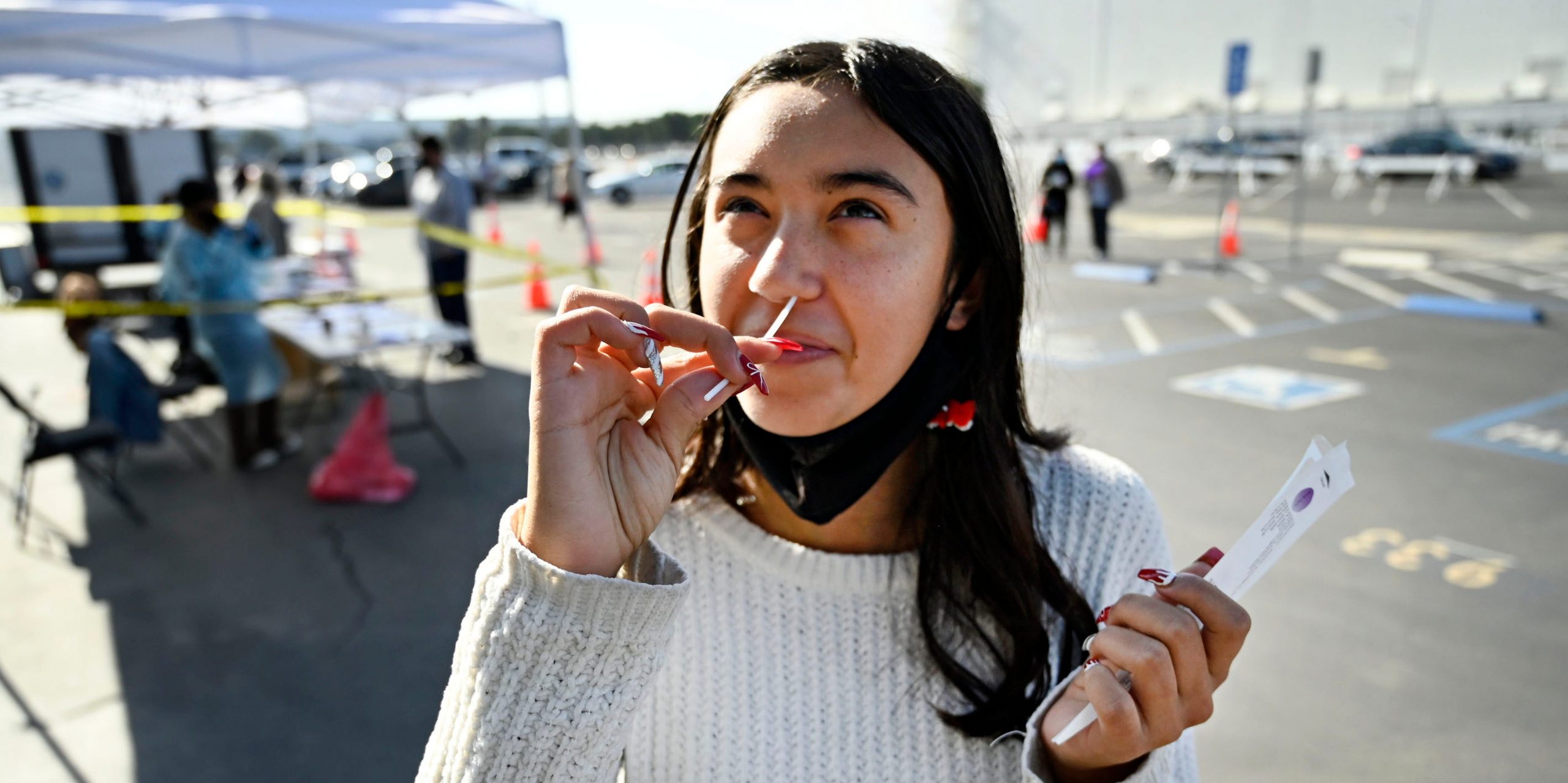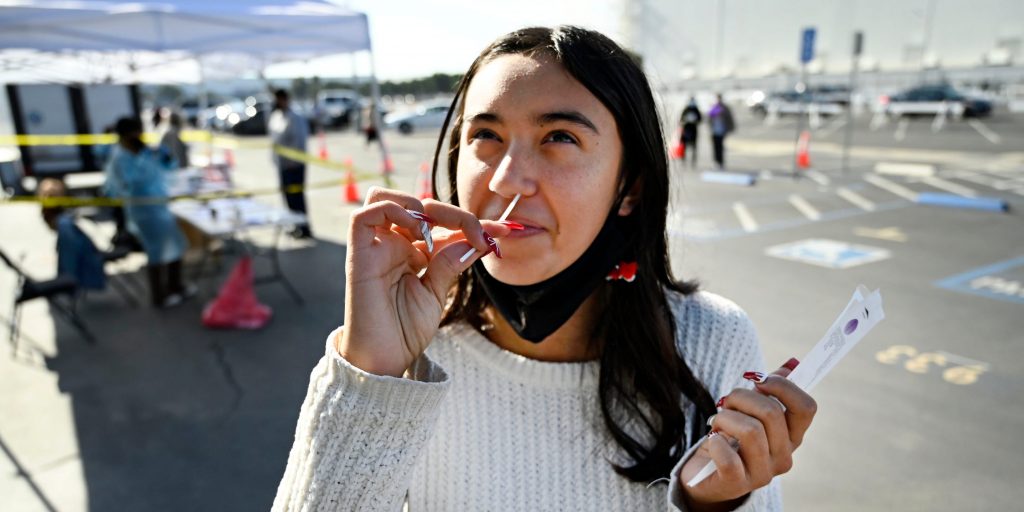
- The disappointing December jobs report doesn't even include the sharp uptick in Omicron cases.
- The report's household survey period ended on December 11, roughly a week before case counts surged higher.
- The timing places even more importance on the January report amid the hindered hiring recovery.
The December jobs report was stale the moment it was published. Blame the Omicron variant's timing.
Data out Friday showed hiring disappointing again in December as supply-chain issues and elevated virus cases continued to hobble the recovery. The 199,000 added payrolls, while preliminary, show the hiring rebound slowing despite roughly 6.3 million Americans still unemployed. And worse readings are highly likely to follow.
Economists expected the country to add 450,000 nonfarm payrolls last month, more than twice the actual figure. That upset came while the economy remained almost fully open and before Omicron emerged as the next variant to endanger the recovery.
The establishment survey behind the payrolls count ran through the pay period that included December 12. Daily US virus case counts remained elevated during that time and started to trend higher later that week. Yet the survey period for businesses that pay their employees on a weekly or bimonthly basis doesn't include the parabolic surge in COVID cases that began on December 20. Where the week through December 12 saw daily counts fluctuate around 150,000 cases, the seven-day average now sits at about 584,000 cases.
The timing has massive implications for the next jobs report. January data, which is scheduled to be published February 4, will be the first to factor in the latest wave of cases and its effect on the labor market.
That report's household survey period will run from January 9 to 15. If cases continue to climb as they have in the last few days, the January data will reflect job creation during the worst period yet of the coronavirus's spread. The CEO of New York-Presbyterian Hospital forecasted on Friday that the city's own Omicron surge would hit its peak this week, Insider's Jake Lahut reported.
It's unclear just how hard Omicron will hit hiring. The variant's increased contagiousness has made it the fastest spreading variant yet. But the surge has also resulted in fewer hospitalizations than previous waves due to its reduced severity and more people having received a booster vaccine. Put simply, more people are catching Omicron, but the results aren't nearly as dire as those seen from the Delta variant.
It's also not guaranteed that the preliminary jobs data stays gloomy. Payroll growth during the Delta wave was revised higher in the following months and eventually showed hiring holding strong despite the variant's spread. The December data will be revised in January and February reports, and its possible the final count is much more encouraging.
Even some data in the December report points to the Omicron variant having little effect on hiring. The report's household survey showed 651,000 jobs added through December, handily surpassing the establishment survey's sum. The two survey's counts have diverged massively in recent months, and the higher household number could hint at healthy revisions to come. Still, the household survey's reference period ran from December 5 to December 12, meaning it also failed to capture the worst of the Omicron surge and its effects.
The Omicron-era hiring outlook remains murky despite Friday's highly-anticipated report. With cases continuing to soar higher and the labor market notching its best one-year performance ever, January's report is shaping up to be a crucial signal for the economic recovery through 2022.

